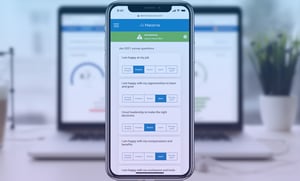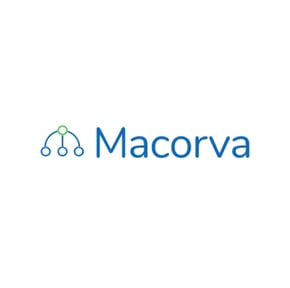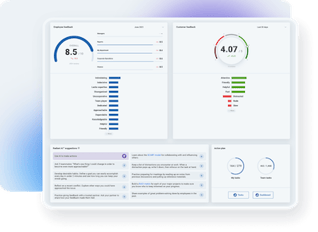
360-Degree Reviews: A Practical Guide to Improving Employee Development
Imagine having a clear view in every direction from a mountaintop. That's the idea behind 360-degree reviews in the workplace. These review programs are comprehensive, gathering feedback not just from an employee’s direct boss but also from peers, subordinates, and even other managers. This approach creates a full-circle, multi-level feedback system that truly covers all angles of an employee’s performance.
By incorporating diverse perspectives, 360-degree feedback aims to provide a balanced view of an employee's strengths and areas for improvement, reducing the potential biases that often accompany feedback from a single source. But implementing 360-degree reviews can be challenging. It requires a robust cultural foundation that supports transparent and constructive communication.
This article explores how to successfully integrate 360-degree reviews to enhance your employee development strategy.
The Benefits and Objectives of 360-Degree Reviews
Award-winning British author Julian Patrick Barnes famously said, "The more you know, the less you fear." Many strategists committed to the 360-degree employee review system agree, claiming that fear pretends to keep us safe but, in reality, prevents us from taking crucial calculated risks. They emphasize that understanding various perspectives within the workplace, even if sometimes disappointing, can positively impact our personal growth and enrich our lives sustainably. How? Here’s four ways effective 360-degree feedback benefits an organization:
- Team Dynamics: Most employees (even those working remotely) are team contributors, a dynamic that functions smoothly around constructive, well-received feedback. When implemented properly, meaningful observations are a natural product of the 360-degree concept.
- Continuous, Data-centric Feedback System: Unlike traditional reviews, 360-degree feedback is ongoing and relies on continuous data collection, providing honest, anonymous insights that focus solely on personal development and self-awareness, not tied to pay scales or promotions. With Macorva, this feedback can be delivered in real-time, allowing employees and managers to address issues and celebrate successes as they happen, fostering a more responsive and dynamic work environment.
- Behavioral Improvements: Employees learn to adopt behaviors that promote career advancement and discard counterproductive habits, encouraged by a non-competitive feedback environment without fear of penalties or rewards.
- Proactive Cultural Shift: The feedback culture evolves to one where employees actively seek out feedback instead of passively waiting, leading to significant organizational changes that include:
- Accelerated operational improvements.
- Increased team cohesion, resilience, and adaptability.
- Smarter decision-making that positively impacts the bottom line.
- Visible professional growth across all levels of the organization.
- A stronger accountability culture.
- A robust talent pool for succession planning.
- Quick identification and addressing of training needs.
- Enhanced self-awareness that leads to a more balanced corporate perspective and realistic growth expectations.
- More confident recognition of personal strengths.
- A commitment to moving away from limited feedback systems.

How important is employee feedback?
Managers can use employee feedback for immediate performance improvements. Learn how
How to Set Up a 360-Degree Review Process
Understand the Issues Caused By a Flawed Process
The benefits and achieved goals outlined above emerge from successful multi-dimensional initiatives that reach all managers, peers, and subordinates. However, success doesn’t happen automatically. Many companies enter this innovative and ambitious project optimistically with sincere intentions yet fall short of expectations. Why? They underestimate the strategic challenges, resulting in limited or no feedback from leadership above employees’ direct managers or peers outside of:
- The employees’ appointed team.
- The team reporting directly to managers.
In short, a flawed 360-degree review program may end up no different from the traditional limited feedback process it’s trying to replace. This contradicts its goal of offering deeper, more insightful perspectives. However, that’s not the worst outcome; serious employee disillusionment occurs when employees realize the culture they bought into isn’t working, triggering disengagement. For example, employee churn becomes a substantial threat if the employees' connection is only with their direct supervisors, and that relationship becomes strained (as it frequently does).
Reducing Challenges in the 360-Degree Feedback Process
Relying on traditional methods to provide 360-degree performance evaluations won’t work. Stakeholders must avoid appointing direct managers as employees’ only raters in a once-a-year event. They do this by:
- Defining which employees will participate in the program (if not the entire company). Why? Many businesses want to test it across a representative sample before expanding it.
- Ensuring the employees outside the 360-degree development and performance management processes don’t feel overlooked or excluded.
- Establishing a timeline to measure the results.
How do you do these three things? Five ways:
- Create transparency around the 360-degree project that includes non-participants so there’s a clear awareness throughout the hierarchy.
- Offer sessions to explain the step-by-step employee feedback processes.
- Ensure employees understand the shift from occasional reviews involving one rater to continuous improvement feedback from peers, leadership, and juniors outside direct reporting lines.
- Select the key performance indicators (KPIs) that will indicate the success levels achieved at crucial touchpoints along the 360-degree program journey and timeline (see more below).
- Choose the right tools to maximize engagement and response rates. Macorva's Radiant AI® organizes employee feedback into easy-to-use resources, suggesting specific actions for improvement. It makes surveys easy and intuitive, ensuring that employees can provide feedback effortlessly. With dynamic distribution capabilities, surveys reach employees through their preferred channels, while the tappable feedback feature allows for quick and efficient input, significantly boosting response rates. This approach helps 360-degree feedback programs run much faster than manual methods, helping keep employees engaged and more likely to stay with the company.
In short, to ensure successful implementation and adoption of your 360-degree feedback program it's important to make the setup process as seamless as possible. With Macorva, setting up a 360-degree review process is straightforward and efficient. Our platform automates much of the setup, integrating with over 50 HRIS systems in under a minute. This quick integration ensures that all relevant data is easily accessible and up-to-date.
By simplifying the process, Macorva removes barriers to adoption, allowing you to focus on what matters most—engaging your employees. 
How to Design Effective 360-Degree Review Questions
Designing effective questions is key to gathering meaningful feedback. With Macorva, you have the flexibility to create questions that highlight employees' abilities to lead, communicate, and contribute effectively to their teams. Our platform offers AI-generated questions tailored to your needs, ensuring relevant and insightful feedback. Plus, we provide a robust bank of 150+ pre-defined engagement questions created by I/O psychologists, giving you a solid starting point.
You can easily tailor questions to fit your organization's unique culture and goals, making it simple to align the feedback process with your strategic objectives.
Here are some practical tips for creating these questions:
- Use a mix of close-ended and open-ended questions to gather insights into the respondents’ thoughts and emotions. This approach helps capture a full picture of employee performance.
- Encourage respondents to focus on constructive feedback without bias, ensuring that ratings are carefully considered.
- Ensure that feedback remains anonymous to promote honest and open responses. The Macorva platform is designed to protect anonymity, encouraging employees to share their true thoughts and insights without fear of repercussions. This anonymity is crucial for gathering genuine feedback that can drive meaningful improvements.
Examples of effective closed-ended questions under the relevant subheadings are as follows:
LeadershipRate the manager/employee from 1 (strongly disagree) to 5 (strongly agree) on the following. Note that 5 represents a neutral or “no opinion” rating.
- The manager adequately acknowledges others’ contributions to solutions and projects.
- The manager seeks others’ opinions before making a decision.
- The manager effectively solves problems most of the time.
- The employee regularly helps resolve complex problems.
- The employee takes responsibility for personal actions in a project.
- The employee shows willingness to help peers meet urgent deadlines.
- The employee’s ideas are innovative and realistic.
Please answer the following questions with one of six responses:
- All the time.
- Some of the time.
- Sporadically.
- Seldom.
- Never.
- I can’t say.
- Does this employee listen to others’ suggestions?
- Does this employee communicate clearly with customers, managers, and peers?
- Does this employee ask for information when it’s needed to complete tasks?
- Does the employee communicate clearly in writing or verbally whenever necessary?
- Does the employee offer ideas that spark new discussions?
Team Contribution
Rate the employee from 1 (strongly disagree) to 5 (strongly agree) on the following. Note that 5 is a neutral rating.
- Does this employee work fit in seamlessly with the team?
- Does this employee manage stress under pressure well?
- Can the team trust this employee to work independently until tasks are completed?
- Does this employee understand how their commitment affects other team members?
Follow-Up open-ended questions you can attach are as follows:
- Why did you give this rating?
- Is there anything else you would like to share about your response?
- What recommendations do you have for this employee going forward?
- If you gave a low rating, what should the employee do to improve?
- Can you provide specific examples that led to your rating?
By leveraging Macorva's AI capabilities and customization options, you can design a feedback process that truly reflects your organization's needs and drives meaningful employee development.
The Feedback Process: Collecting, Analyzing, and Delivering Feedback to Employees
Creating a successful feedback process involves more than just gathering data; it requires smart analysis and clear delivery of insights. Macorva's Radiant AI enhances this process by automating data analysis and providing actionable insights. Here's how it works:
Radiant AI not only collects feedback but also performs automated analysis to deliver insights quickly and accurately. It generates personalized engagement reports for managers, offering tailored insights and actionable steps to enhance team performance. These reports help managers understand individual and team dynamics better, leading to more effective coaching and development.
Macorva's platform also supports real-time feedback, allowing for immediate responses to emerging issues and opportunities. This capability keeps the feedback loop active and relevant, ensuring that insights are timely and actionable. Additionally, Radiant AI generates benchmark results for every engagement question, providing a standard for comparison. This allows organizations to see how their teams measure up against industry standards or internal goals, making it easier to identify areas for improvement.
To maximize the effectiveness of your employee feedback process, consider the following strategies:
- Use simple but powerful data analysis tools that support an inclusive culture.
- Select technology that encourages interactive employee engagement while maintaining anonymity.
- Understand that employee and customer data (behavioral, demographic, and psychographic) in various formats is only valuable when it's:
- Accurately accessed
- Delivered on time
- Easy to understand
- Involve processes that eliminate the "garbage in, garbage out" threat by:
- Detecting biases, errors, and incomplete responses
- Using data analysts and software to organize raw data into trusted, statistical results
Software selection is another key aspect. A program's success is greatly impacted by key implementation strategies that enhance the system's efficiency and impact, including:
- Integration with Existing HRIS Technology: Tools should integrate seamlessly with your existing HR infrastructure, allowing for easy data import and export.
- Easy Distribution: The ability to distribute surveys easily via email or SMS is crucial for enhancing accessibility and significantly boosting response rates.
- Personalized AI-Powered Reports: Automatically generating and delivering personalized reports to managers is essential, providing them with tailored insights and actionable steps for effective feedback implementation.
Platforms like Macorva's AI-powered employee feedback system demonstrate these capabilities effectively. Our Radiant AI technology elevates performance management by automatically gathering comprehensive, data-centric insights and centralizing them on a single platform. The system captures all employee feedback, survey data, and manager notes in one place, creating a streamlined process that delivers personalized, reliable results while saving time. Read this case study to learn more.

Reinventing employee review programs at CIRS.
Creating Employee Development Plans
Having read this article so far, we can conclude that successful programs depend on willing employee participation, clear communication, and proper training. It's worth reiterating that the benefits and goals outlined earlier help build ongoing support for the program in the workplace.
To make the most impact, focus on identifying the most needed continuous improvement areas and ensure that the process aligns individual goals with organizational objectives.
The Macorva platform takes this a step further by automatically generating personalized employee development plans based on 360-degree feedback. These plans are tailored to each employee's strengths and areas for improvement, providing clear, actionable steps for growth. Additionally, Macorva offers AI-powered coaching, which delivers personalized guidance and recommendations to help employees reach their goals. This automation ensures that development plans are not only aligned with organizational goals but also personalized to meet individual needs, fostering a culture of continuous improvement.
With this in mind, here are the key strategic initiatives that help maintain program momentum and keep feedback as a foundation for employee retention:
Performance Management Follow-Up and Addressing Challenges
Any comprehensive feedback system, especially the 360-degree platform described here, can touch on sensitive areas that might create anxiety, stress, and frustration - all the emotional disruptions one aims to dissolve.
Therefore, it’s essential to:
- Monitor the program’s progress
- Set up ways to quickly identify signs of dissatisfaction
Follow-up procedures and anticipating challenges are much simpler than they may seem as long as:
- The data readings emerge when you need them.
- The program’s participants remain engaged and supportive.
- Training materials (podcasts, videos, seminars) are regularly updated
- KPI tracking tools provide ongoing insights
Remember, no single program component carries all of the weight. Success comes from an integrated formula of all components working together to maintain participant privacy, trust, and enthusiasm.
Finally, make sure your 360-degree feedback program matches your company's unique needs and culture. Macorva's software can be customized to fit your organization, whether you manage the program internally or work with outside partners. The platform helps you create a feedback process that aligns with your company's values and goals.

Performance Evaluations: How do you Measure the Success of 360-Degree Reviews?
Evaluating performance effectively is crucial for employee development and engagement. With Macorva, this process is enhanced through AI-generated performance reviews that provide unbiased and comprehensive evaluations. These reviews draw from a wide range of integrated data sources, including employee feedback, engagement data, and more, ensuring a well-rounded assessment. Radiant AI also includes automated risk analysis, which helps identify potential biases or unsupported statements in performance reviews. This feature guides managers in creating fair and constructive evaluations, reducing the risk of errors and improving the overall quality of feedback.
The consistency and objectivity provided by automated reviews make it easier to measure the success of these evaluations. This is where KPI readings come into play, as they are crucial for assessing employee development and engagement. They provide metrics that instantly tell stakeholders if things are going to plan, struggling at certain touchpoints, or facing serious issues. Your software selection should work smoothly with your company’s other performance tools to deliver meaningful, unbiased KPIs that employees trust.
Key measurement tools include:
- eSat and NPS surveys integrated to measure employee satisfaction and loyalty.
- eSat surveys to view either:
- The whole organization
- Specific employee groups
- NPS indicators showing employee engagement through a simple question: "Would you recommend Company X to your best friend as a place of employment?"
- Additional metrics that provide deeper insights:
- ROI, revenue, and overhead changes
- Employee retention rates
- Productivity measurements
- Annual voluntary departures
- Early-stage turnover trends
By leveraging AI-generated performance reviews and automated risk analysis, Macorva ensures that performance evaluations are not only efficient but also insightful and fair. This approach maintains a high standard of feedback, essential for measuring success and demonstrating progress over time. By integrating automated reviews with performance measurement tools, organizations create a feedback loop that enhances the review process and delivers measurable improvements in employee performance and outcomes.

Conclusion
Artificial Intelligence and 360-degree feedback are integral to modern performance management. Systems like Macorva's Radiant AI streamline the feedback process, helping HR managers and stakeholders address traditional workplace challenges and promote a culture of continuous engagement and development. By adopting the strategies discussed, including effective feedback mechanisms and thorough process monitoring, organizations can quickly achieve measurable success.
Macorva's user-friendly interface facilitates easy adaptation to these advanced methods, enhancing personal growth and job satisfaction among participants. This shift towards a learning-oriented culture not only minimizes disruptions but also significantly enhances performance across the board.
In today's competitive business environment, effective employee development is more crucial than ever. AI-powered tools provide HR leaders with the necessary resources to actively engage their teams and drive them towards enhanced productivity and success.
Discover the immediate benefits Macorva's AI-powered 360-degree feedback solution can offer your business by accessing our on-demand demo.






